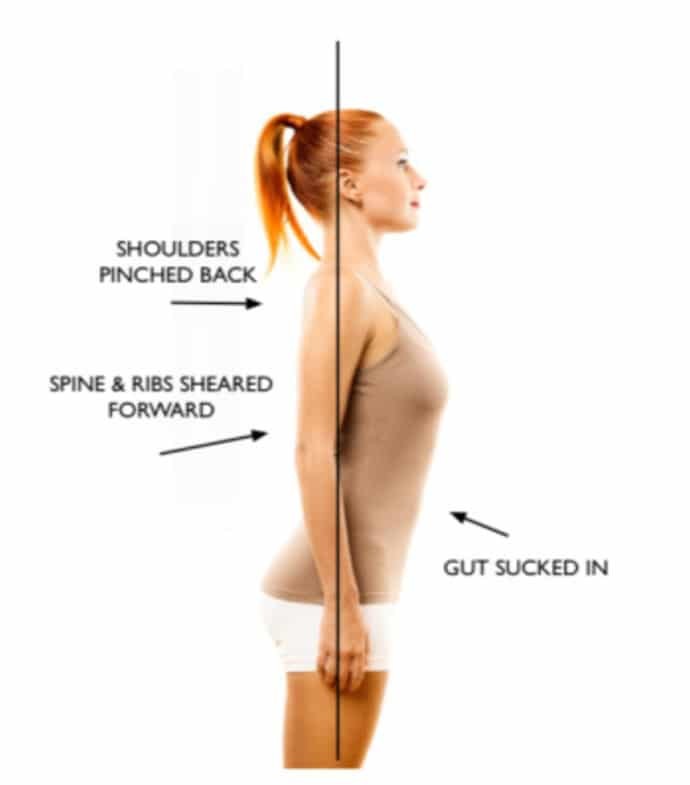Rib flare, a condition where the lower ribs protrude forward, can be a source of discomfort and pain. It often presents with a straightened or overly arched upper back, elevated breastbone, and shoulder blades pulled back excessively. This article explores the causes, problems associated with rib flare, and provides a five-step fix to help correct this postural issue.
What Causes Rib Flare?
Rib flare occurs when the rib cage sits forward of the pelvis, disrupting the natural curvature of the spine (thoracic kyphosis) and often leading to an anterior pelvic tilt (forward tilting of the pelvis). This misalignment can cause compensatory adjustments like hyperextending the knees, further exacerbating the problem. Poor posture, often characterized by standing too straight with the chest puffed out and shoulders pulled back, is a significant contributing factor.
Problems Associated with Rib Flare
Rib flare places excessive strain on the spine, neck, ribs, and shoulders. This unnatural posture triggers the body’s protective mechanisms, leading to muscle tension, joint stiffness, and restricted nerve movement. Over time, this can result in chronic pain, stiffness, and increased risk of acute injuries.
5 Steps to Fix Rib Flare
Addressing rib flare involves consciously correcting your posture and strengthening the necessary muscles. Here’s a five-step approach to help fix rib flare:
1. Self-Assessment: Do You Have Rib Flare?
Stand sideways in front of a mirror and observe your posture. Do your lower ribs stick out? Is your upper back overly straight or arched? Does your chest protrude forward? Do you experience pain or stiffness in your upper body, neck, or shoulders? Place your back against a wall with your feet 5-10cm away. Does your mid-back touch the wall, or only your shoulder blades? These are all indicators of potential rib flare.
2. Rib Retraction in Lying Position
Lie face up with your knees bent. Place your hand under your lower ribs and gently draw them down towards the floor, pressing into your hand. Hold for a few seconds and repeat 8-10 times. This exercise helps retrain your muscles to maintain proper rib positioning. Initially, it might feel awkward, but consistency is key. Try to perform this exercise 2-3 times throughout the day.
3. Progression 1: Overhead Arm Raise
Once you’re comfortable with rib retraction, progress by raising both arms overhead while maintaining a flat thoracic spine (mid-back). Focus on drawing your ribs down and engaging your core while slowly raising your arms. Avoid letting your ribs lift or your back arch off the surface. Repeat 10 times, 3 times daily.
4. Progression 2: Single Leg Raise
The next progression involves performing rib retraction while holding one leg up in the air, then raising both arms overhead. This added challenge further engages your core and helps stabilize your posture. Repeat 6-10 times with each leg, 3 times daily.
5. Progression 3: Double Leg Raise
Finally, progress to holding both legs up while performing rib retraction and raising your arms overhead. This is the most challenging variation and requires significant core strength and control. Repeat as tolerated, aiming for 6-10 repetitions, 3 times daily.
Integrating into Daily Life
Consciously correcting your posture throughout the day is crucial for long-term improvement. Imagine shunting your rib cage back over your pelvis while standing and sitting. Practice regularly and be mindful of your posture. It can take time and repetition (up to 2000 reps) for the corrected posture to feel natural. With consistent effort, you can achieve a more balanced posture, reduced tension, and significant pain relief.
